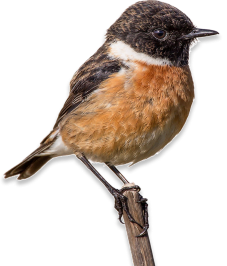In today’s fast-paced and demanding world, stress has become an integral part of our lives. The pressures of work, relationships, and daily responsibilities can take a toll on our mental and physical well-being, including mental health. Numerous bodily ailments, such as increased weight, diabetes, and high blood pressure, can arise if stress is not checked in time. However, there are effective strategies to manage and reduce stress, and one of the effective techniques is through deep relaxation exercises. These exercises promote relaxation and calmness of mind and alleviate the physical symptoms of stress. This article will explore 5 proven ‘deep relaxation techniques’ that can help manage our stress levels and improve our physical and mental health and wellbeing.

The first widely practised relaxation technique is deep breathing exercises. This is also known as ‘pranayama’ in India. Deep breathing involves taking slow, deep breaths, filling the lungs with air, and exhaling slowly. By focusing on the breath, we can shift our attention away from stressors and bring our mind and body into a state of relaxation. Deep breathing triggers the body’s relaxation response, reducing the heart rate, lowering blood pressure, and promoting a sense of calm and tranquillity. Practising deep breathing exercises for just a few minutes daily can profoundly impact our stress levels and overall mental health and well-being.
Another effective exercise
The second effective deep relaxation exercise is progressive muscle relaxation (PMR). PMR involves systematically tensing and relaxing different muscle groups in the body. By deliberately pulling muscles and then releasing the tension, we can release built-up physical stress and experience a deep sense of relaxation. Starting from the toes and moving up to the head, we can systematically tense and relax each muscle group, paying attention to the sensations of tension and relaxation. This exercise helps release physical tension and promotes a sense of deep relaxation throughout the body.
Managing Stress through Visualization Exercises:
The next relaxation technique is ‘visualization exercise’. Visualization exercises can also be highly effective in managing stress. Visualization involves using the power of your mind to create mental images that evoke feelings of relaxation and calmness. We can imagine ourselves in a peaceful and serene environment, such as a beautiful garden, beach, or forest area. By vividly picturing ourselves in these scenic and peaceful surroundings, we can engage the senses and experience deep relaxation and tranquillity. Visualization exercises can be enhanced by incorporating calming sounds or aromas, further strengthening the relaxation response.
Managing Stress through Mindfulness Meditation:
Mindfulness-based meditation is another powerful tool for managing stress through deep relaxation. Mindfulness meditation involves focusing one’s attention on the present moment and observing thoughts and sensations without passing any judgment or assigning meaning. By practising mindfulness, we can become more aware of our stress triggers and develop the ability to respond to them more calmly and composedly. Mindfulness meditation cultivates a non-reactive and accepting attitude towards stressful thoughts and emotions, allowing us to navigate through challenging situations with greater ease and resilience.
Progressive Relaxation Techniques
This set of relaxation techniques is ‘body scan’ that can also help manage stress. Body scans involve systematically directing our attention to different body parts and observing any sensations or areas of tension. We can promote a deep sense of relaxation by bringing awareness to the body and consciously releasing the pressure. Body scans can be done lying down or sitting in a comfortable position, and they offer an opportunity to connect with the body, release physical stress, and cultivate a sense of overall mental health and well-being.
Role of Guided Imagery
Guided imagery is a relaxation technique that involves listening to or following a guided audio recording that leads individuals through a series of visualizations and relaxation exercises. These recordings often incorporate soothing music, calming voices, and gentle instructions that guide individuals into a state of deep relaxation. Guided imagery exercises can be tailored to specific stressors or goals, such as reducing anxiety before a presentation or promoting better sleep. These exercises can be easily accessed through smartphone applications, websites, or relaxation programs, making them accessible to individuals seeking stress relief.
Managing stress through engaging in physical activities such as Yoga or Tai Chi
These physical activities can also promote deep relaxation and stress reduction. These practices combine gentle movements, breath control, and mindfulness, providing a holistic approach to managing stress. Yoga specifically focuses on the mind-body connection and promotes flexibility in the body. There is a huge amount of research work available on the net that corroborates the deep connection between yoga and our physical and mental health. In many countries around the world, people are increasingly practising yoga exercises in their daily routines. Every year, the 21st of June is celebrated as International Yoga Day. In India, millions of people from all walks of life gather and practice yoga.
Takeaway:
In the modern age, the whole of society is stressed. The majority of us suffer from stress of varying degrees because of the workplace, relationships, financial constraints, and health issues. Many do not realize that if not managed well and timely, stress may lead to many complications in our body, affecting our physical and mental health. To handle stress, deep relaxation techniques can play a significant role. These techniques are simple to perform, but we can get excellent results if practised regularly. Better to start these exercises early before the symptoms of stress manifest in different ways.

